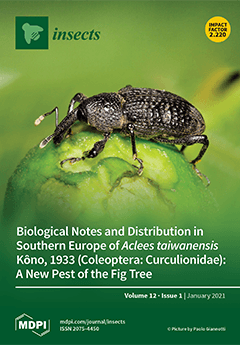One possible way to overcome the diversity of toxic plant allelochemicals idiosyncratically distributed among potential host plants is to have more counterdefense genes via gene duplication or fewer gene losses. Cytochrome P450 is the most important gene family responsible for detoxification of the diversity of plant allelochemicals. We have recently reported the identification and cloning of the transposon (
HzSINE1)-disrupted non-functional
CYP321A2, a duplicated paralog of the xenobiotic-metabolizing P450
CYP321A1 from a laboratory colony of
Helicoverpa zea. Here we report the identification of the wild-type intact allele of
CYP321A2 from another
H. zea colony. This
CYP321A2 allele encodes a deduced protein of 498 amino acids and has the P450 signature motifs. Quantitative RT-PCR experiments showed that this
CYP321A2 allele was highly expressed in midgut and fat body and achieved the highest expression level in the developmental stage of 5th and 3rd instar larvae.
CYP321A2 and
CYP321A1 were constitutively expressed in low levels but can be differentially and significantly induced by a range of the plant allelochemicals and plant signal molecules, among which xanthotoxin, flavone, and coumarin were the most prominent inducers of
CYP321A2 both in midgut and fat body, whereas flavone, coumarin, and indole-3-carbinol were the prominent inducers of
CYP321A1 in midgut and fat body. Moreover, xanthotoxin- and flavone-responsive regulatory elements of
CYP321A1 were also detected in the promoter region of
CYP321A2. Our results enrich the P450 inventory by identifying an allelochemical broadly induced
CYP321A2, a paralog of
CYP321A1 in
H. zea. Our data also suggest that the
CYP321A2/
CYP321A1 paralogs are a pair of duplicated genes of multigene families and
CYP321A2 could potentially be involved in the detoxification of plant allelochemicals and adaptation of
H. zea to its chemical environment.
Full article






